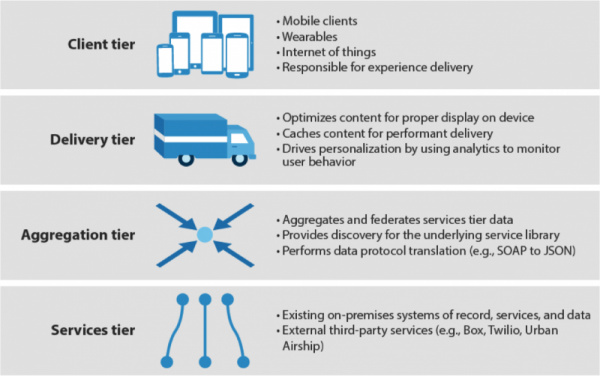Nine Chapter System Design¶
Detailed notes see the slides. Here are materials missing form the slides.
Lecture 1¶
Design Netflix¶
Excerpt from Mobile Needs A Four-Tier Engagement Platform

How the four tiers handle the load:
A client tier accounts for the unique attributes of different devices. This presentation layer insulates the unique capabilities of each app and device — desktop or mobile, browser or dedicated app — from the services that back-end applications deliver. This boundary allows developers to create back-end services like flight status and shipment notification independent of the mobile app that will consume them. Creating this clear boundary drives productivity for your developers without an onerous maintenance challenge; it will be critical for a fluid business partner network.
A delivery tier handles special middle- and last-mile challenges. This element uses intelligence from the client layer to determine the optimal way to deliver contextually appropriate content. The delivery tier accomplishes this by using over-the-wire content transformation — as opposed to protocol-based conversions at the next aggregation layer — and leveraging edge-of-network cache functionality for increasingly dynamic data. CDNs such as those provided by Akamai, along with delivery optimization solutions like Instart Logic, application delivery controllers like Riverbed Stingray, and on-premises in-memory database caches, fulfill this today.
An aggregation tier integrates internal and external services and transforms data. This API layer has two brokerage roles, providing discoverability between app requests and services and bidirectional translation between client requests and back-end or third-party services. This makes composing the underlying data and services easier and enables relatively simple real-time translation to the appropriate data format. The service composition becomes more dynamic with the addition of business intelligence, analytics, and role-based access, which occurs in this tier.
A services tier spans internally and externally provisioned data and functionality. This final architectural element dynamically composes data and business processes through a set of continuously deployable services. This tier provides data to the layers above without concern for how that data is consumed; the other layers can exist behind the corporate firewall or externally — or both! This allows for the ultimate flexibility in the consumption and dynamic composition of services, whether leveraged by apps or by the evolving partner ecosystem.
Reference¶
- Netflix’s Viewing Data
- Mobile Needs A Four-Tier Engagement Platform
- NGINX Search Results for: netflix
- Netflix Tech Blog
Lecture 2 Database systems¶
Design user system¶
Scenario